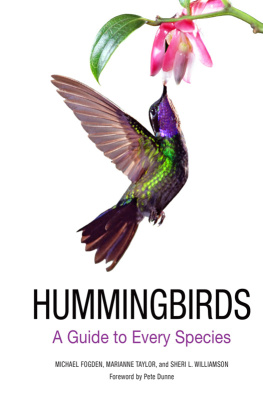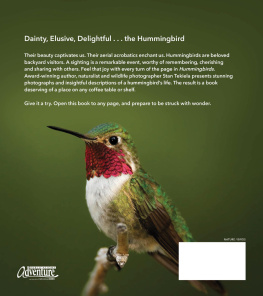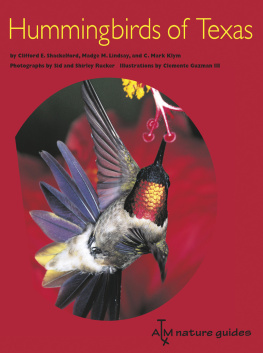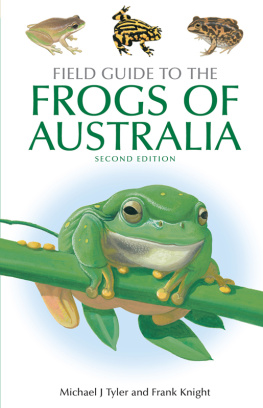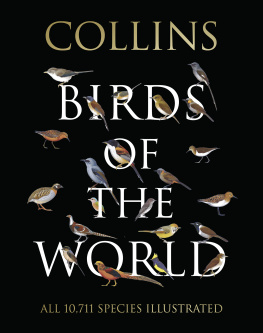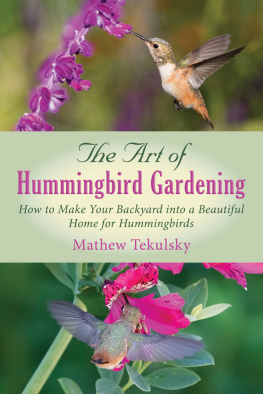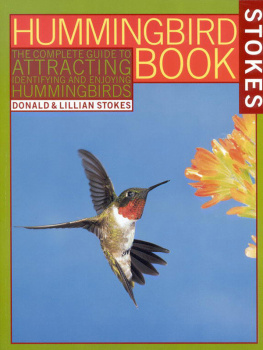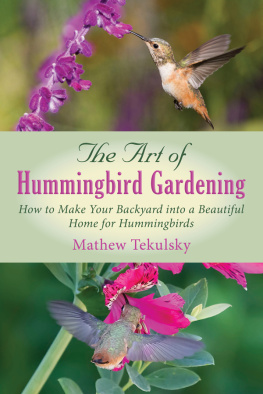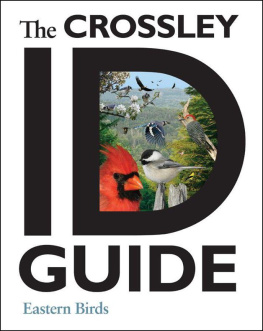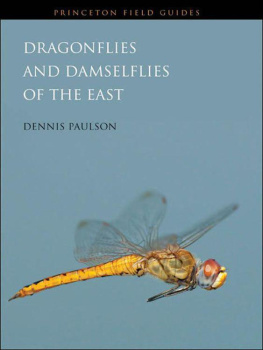HUMMINGBIRDS: A GUIDE TO EVERY SPECIES. Copyright 2014 by Ivy Press Ltd. All rights reserved under International and Pan-American Copyright Conventions. By payment of the required fees, you have been granted the nonexclusive, nontransferable right to access and read the text of this e-book on-screen. No part of this text may be reproduced, transmitted, downloaded, decompiled, reverse-engineered, or stored in or introduced into any information storage and retrieval system, in any form or by any means, whether electronic or mechanical, now known or hereinafter invented, without the express written permission of HarperCollins e-books.
HarperCollins books may be purchased for educational, business, or sales promotional use. For information, please email the Special Markets Department at SPsales@harpercollins.com.
Published in the United States and Canada in 2014 by:
Harper Design
An Imprint of HarperCollins Publishers
10 East 53rd Street
New York, NY 10022
Tel: (212) 207-7000
Fax: (212) 207-7654
harperdesign@harpercollins.com
www.harpercollins.com
Distributed throughout the United States and Canada by:
HarperCollins Publishers
10 East 53rd Street
New York, NY 10022
Fax: (212) 207-7654
This book was produced by:
Ivy Press
210 High Street, Lewes
East Sussex BN7 2NS, UK
CREATIVE DIRECTOR Peter Bridgewater
PUBLISHER Susan Kelly
EDITORIAL DIRECTOR Tom Kitch
ART DIRECTOR James Lawrence
COMMISSIONING EDITOR Kate Shanahan
EDITORS David Price-Goodfellow & Susi Bailey
CONTRIBUTING EDITOR Rob Yarham
DESIGNER J.C. Lanaway
MAP ILLUSTRATIONS BirdLife International
Library of Congress Control Number: 2013952639
Color origination by Ivy Press Reprographics
ISBN: 978-0-06-228064-0
EPub Edition MAY 2014 ISBN 9780062306401
Contents
At no other time in human history have more people lived in closer proximity to and in greater intimacy with birds. Birds today are an integral part of our suburban landscape. They have even infiltrated urban centers, making themselves at home in habitats designed solely for our species. This avian integration was made clear to me one morning in 2013, when we, the members and staff of the New Jersey Audubon Society, spent the morning bird-watching in Central Park in New York City, spotting dozens of brightly colored warblers in a few hours. It was prime time for northbound songbird migration, and among birders a bird-walk through the meadows called the Ramble is a rite of spring. Later, at the apartment of two of our supporters, I inquired about the couples yard list (i.e., the total number of bird species tallied in or from their yard). After they explained that as residents of the fourth floor they had no yard, I observed that they did have a fire escape and then asserted somewhat brashly that I would find 30 species of birds as a down payment on their Manhattan yard list.
Supporting my conviction were the images I saw through my Zeiss spotting scope as I scanned the East River. I found the promised number, and the event heightened my understanding of how what has lagged is human awareness, not appreciation, of the world of birds.
If asked, most people will tell you they like birds. Birds have integrated themselves into our religions, fables, and literature. The US Fish and Wildlife Service estimates that more than 17.3 million people actively watch birds in North America. The adaptive specializations that allow hummingbirds to hover, fly backwardeven inverted (it is reported)make them a favorite bird group among bird-watchers. Their jewel-like plumage, coupled with their partiality to nectar-bearing flowers, endears them to gardeners who have come to think of hummingbirds as animate blossoms, offering a dynamic element to landscape design.
Our appreciation of birds might be broad, but it is not uniform. Some bird groups simply excite us more than others. Penguins and hawks are hot-button bird groups; so too are hummingbirds. If few hummingbirds have been the focus of documentaries or found their way onto football jerseysas have assorted birds of preyI submit that few penguins are featured on fine china, yet hummingbirds are a perennial porcelain favorite.
The late writer/ornithologist Sally Spofford once told me about a pair of Blue-throated Hummingbirds that overwintered at her home near the Chiricahua Mountains. Although she put out an ample number of hummingbird feeders, rival males pummeled each other in an effort to dominate the food source. During one spirited contest, Sally observed a bird jumping up and down on his rival, driving him into the snow. But because hummingbirds have very short legs, neither bird was able to bring its lance-like bill to bear.
My wife, Linda, and I once camped for a week in Cave Creek, Arizona. The morning of our departure our hummingbird feeder was stowed on the floor of our RV and a Blue-throated Hummingbird positioned himself between us and the exit, refusing to surrender the right-of-way until Linda offered up one last sip. While most birds flee from us, hummingbirds approach us, even sipping sugar water out of our hands if it is offered. They seem to trust us, and we repay them with affection.
My most memorable encounter with a hummingbird involves one of the authors of this book. While leading a workshop for teenage birders, Linda and I enlisted Sheri Williamson to treat our group to a banding demonstration, which required special permits. Before releasing a Magnificent Hummingbird, Sheri asked if any member of our group wanted to hold the bird. A young woman from New York City accepted the challenge and before you could say Eugenes fulgens , the onyx-breasted bird was lying tranquilly in the girls hand. Never one to miss a teachable moment, Sheri told the keeper that probably fewer than a hundred people on earth have ever held an adult male Magnificent Hummingbird before. When the girls hand began to tremble, the bird righted itself and flew off. I dont know whether that encounter changed the young campers life, but I am confident she never forgot it.
Given the captivating nature of hummingbirds, I am brought to wonder why it has taken so long for this book to have been published. It is the most comprehensive monograph on hummingbirds since John Goulds epic work Hummingbirds was published in 1881. It is also unique in that it has the birds featured at their actual size. Like Goulds book, it is destined to be a classic a book you will turn to for visual delight and also as an authoritative resource every time you encounter one of these captivating birds.
If you find yourself looking for a challenge, consider seeking out all the hummingbird species found in the New World. Given the eco-tourist infrastructure that has evolved across the Americas, it is possible to view in the field most if not allthe species in this book. But if your travels take you no more than a few paces from the table that showcases your copy of Hummingbirds, then, thanks to the skill of photographers Michael and Patricia Fogden and the text crafted by ornithologist Sheri Williamson and writer/naturalist Marianne Taylor, you already have the world of hummingbirds at your fingertips. Consider this a down payment on the 10,000 bird species apportioned across the planet, awaiting your discovery and appreciation.
So far no one has seen all of the planets birds. You could be the firstand your adventure begins at the nearest door, window, or fire escape. No matter where you are at this very moment, you are within sight or earshot of a bird. Now there are only 9,999 species and a lifetime of encounters to go.

